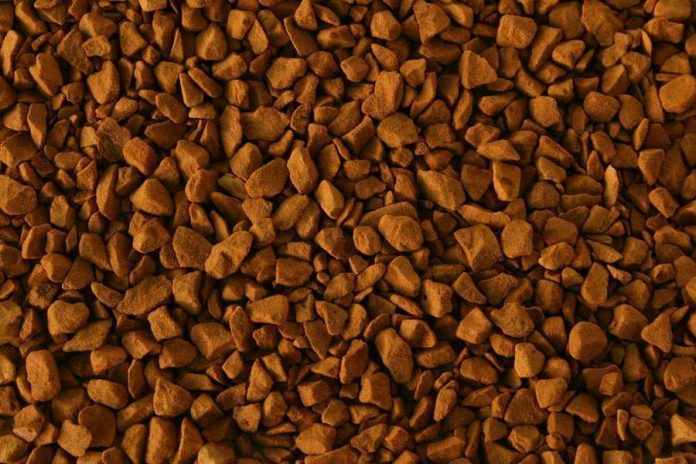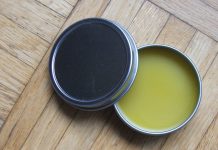It seems as if the start and end of prepping is stockpiling food. I’m saying this because that’s how almost everyone starts and it’s something we’re all doing, long though most of our preps are finished. For no real idea of how long we’re going to have to live off our stockpile, keeping letting it grow, well beyond what we originally expected, seems to make sense.
And while we keep adding to our stockpiles, there is a doubt as to whether all this food will last. Some foods don’t last long, because it comes from the supermarket. Therefore, we have to repackage a lot of what we’re buying, making sure bugs, insects and rodents can’t touch them. Properly packaged, actually there are a range of products that will last much longer than you can expect.
Most of that, of course, has to do with how well we package and store those items. Proper packaging must be airtight and critter proof. Removing the oxygen from the kit will help because, much as we do, insects need oxygen to survive. Fresh products must be very fresh, with no risk that they would be tainted by moisture. So, the introduction of silica desiccant packages may be worthwhile. But all this is within the realm of possibility; even, at times, within the realm of factory packaging, so that we don’t have to repackage it.
Should not forget that they discovered food that had been buried hundreds or even thousands of years ago when they dug up the tombs of the Egyptian pharaohs and Mayan kings. While much of it was lost, some still survived all those years; mainly grains. And those old people managed to do so without our current methods of packaging and food storage.
Why did they get this done? They began with dry foods in the first place, because bacteria can not thrive in a dry climate; they need a moist atmosphere to live. We then placed those foods into sealed containers where insects and rats were unable to access them. Those same keys would perform much better for us, as we have better containers and more equipment than they do.
And what kind of foods can we box and expect from now on to remain healthy for 10, 20 or even 30 years?
Baking Soda
Like baking powder which doesn’t last long, baking soda will last a lifetime. The only thing that you just have to look out for is that it is not getting dirty. It can’t go bad as long as you can shield it from moisture.
You can’t bake anything with just baking soda, of course; but if you take some time to look in the recipe books, you can find the ton you can do with it, even if you don’t have to use baking powder.
Related: Top 20 Things You Need To Grab Before The SHTF Journey
Grains


Most grain styles will remain forever, if packed to protect them against drought, insects and rodents. They had done this in ancient times with clay pots. We can do it with Mylar aluminized bags and plastic buckets nowadays. Add an absorber of oxygen and in 20 years, the majority of those grains will be as fine as they are now.
Long-term storage of unprocessed, unground grains is safe. Oatmeal is one of the best in fact; not the instant oatmeal but the original rolled oats. Although that will take longer to prepare, a nice, balanced breakfast will be served for you.
White Rice is generally better for long-term storage than brown rice is inside a five-gallon plastic container, as long as you are following the same method of placing it in an aluminized Mylar bag.
Related: The Unseen Danger of Grain Storage
Popcorn
One grain you certainly wouldn’t worry about is popcorn. Most of the grain found in those kings’ tombs was probably dried corn. Although I doubt they had microwave popcorn back then, corn was sometimes ground to make bread and tortillas of different kinds. You would want your popcorn and other grains to go with a hand-crank grain mill, so you can use it to bake with. This is going to be easier to deal with than the stone grinding they’ve done so don’t leave stone chips in your meal.
Pasta in a Bucket
Pasta will stay on the shelves for around a year, as it comes from the supermarket. That is mainly because bugs and bacteria are not all that attractive to it. Yet left that way, it’ll inevitably go bad, supposedly. To keep it running for the amount of time we’re thinking about, something else needs to be done with it, like putting it in an aluminized Mylar container, inside a five-gallon plastic tank, with the air squeezed out. Stored like this, pasta can last in the next century only until sometime.
This way, you can simply buy pasta prepared already, as “survival food” or you can do it yourself. When you want a choice (and who doesn’t?) in the shapes of your pasta then you’re probably better off making your own.
Salt
If you’ve done some food storage, such as canning or drying food, you’ve run through salt as one of the preservatives in nature. It draws moisture from food, through osmosis. This destroys bacteria which need to live in a moist climate. You can also imagine what a pure salt atmosphere would do for these bacteria. The only thing that you will need to shield salt from is moisture. Revert back to the buckets.
Related: How to Keep Moisture and Pests Away from Your Food Stockpile
Cane Sugar
Like salt, sugar is a natural preservative although it is typically used only to preserve fruit. It needs to be protected against moisture just like salt. Yet it also needs defense against insects, because many insects love sugar. When the packaging is not sturdy enough to keep them out, Ants will go to great lengths to get to it. So a packet, like the aluminized Mylar bags I mentioned, isn’t enough to get through as ants might. This is one place you really need that plastic bucket, with a good seal.
Beans


Dried beans of all kinds are among the staples eaten across the globe. There is a large range of beans, or legumes, that are sold on the market; some of which you might not know. For baking with, some may also be ground into flour.
For example, chick peas are ground for making a variety of dishes in the Middle East. Make sure that you stock up on good recipes to use your bean hoard, particularly if you’re storing beans that you don’t eat.
Beans don’t come from the grocery store ready for long-term storage, as with grains. You will need to repackage them within five-gallon plastic containers, in aluminized Mylar packets. Yet if you do so, they are going to keep a full 30 years.
Honey
Like sugar, honey will keep forever. But you need to make sure that you have pure honey. Some honey brands, especially those that come from China, add fillers. You’re better off buying honey that’s kept in glass containers than plastic, because the plastic chemicals will potentially leech into the honey.
Honey also has medicinal properties, so there are more than one purpose to store it. Yet you shouldn’t even give honey to kids under five, because it’s not good for them.
Pure Maple Syrup
Real maple syrup, kept in a bottle or container of glass, will stay practically forever, much as honey does. It is safe even because it is filled with vitamin D. The trick to keeping it in a sealed container for extended period of time. When opened, the container will start crystallizing.
Related: 12 Essential Food to Stockpile Before Its Off the Shelves
Powdered Milk
In the grocery store, the condensed milk you find is not really suitable for long-term storage. It is not only unpackaged to hold for a long time, but the milk itself is not adequately prepared for long-term storage. You can buy powdered milk buckets, however, which are well-prepared for long-term storage, which you can rely on holding good for 20 years or more.
Only a note here, some survival food companies that packaged long-term storage powdered milk; but you have to buy it from them, not the grocery store.
Cacao
Cacao (cocoa) was valued by the Mayans as food of the gods. This has been seen as providing tremendous health benefits for those who eat this. In addition to its wonderful flavor, it is useful to energize you. This will also sustain virtually forever, especially when properly sealed away in a bucket.
Freeze-dried Coffee
Any true coffee snob will tell you that coffee needs to be fresh, to be good. While the rest of us might not notice if the coffee we used to make ourselves our morning cup was a couple of months old, we would if it was a couple of years old. However, freeze-dried coffee will keep virtually forever, without changing. One of the first foods ever freeze-dried, coffee is still one of the best.
Tea
Like coffee, tea will keep well for a prolonged period of time. But in this case, the tea leaves themselves can be kept; rather than needing it freeze-dried. The only thing needed, for keeping it safe, is to keep it in a moisture-proof container.
Soy Sauce
Believe it or not, soy sauce will keep indefinitely. It is a fermented food, which makes it impossible for it to go bad. Some other condiments are also fermented, like Worcestershire sauce, so they will keep indefinitely too. The key here though, is that it has to be in glass bottles, as the chemicals in plastic will leach into the food, if kept long enough.





















